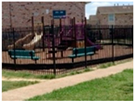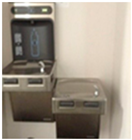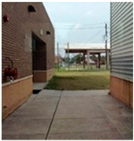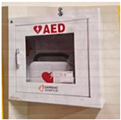1. Introduction
Children of families residing in socioeconomically disadvantaged communities are disproportionately exposed to environmental health risks, including lead-based paint, secondhand tobacco smoke, traffic-related air pollution, and a lack of access to health-promoting resources such as green spaces and nutritious foods [
1,
2]. These exposures increase vulnerability to a range of cognitive, psychological, and physical health comorbidities across the lifespan [
3]. According to the US census [
4], approximately 11% of the U.S. population, or about 36.8 million individuals, lived below the poverty line in 2023. In addition, race and ethnicity disparities in poverty are stark with 17.8% of Black and 16.6% of Hispanic families living in poverty, compared to 7.7% of White families.
Understanding how children and preadolescents perceive the features of healthy communities is a critical first step in addressing environmental health inequities and informing community-based interventions that promote well-being. A growing body of research highlights the importance of children and adolescents’ perceptions of their neighborhoods and schools in shaping health-related behaviors and outcomes. Regarding eating behavior, Thompson et al. [
5] utilized photovoice and conducted interviews with 18 parent–child dyads (56% Black, 44% Hispanic; children aged 8–13 years) to investigate determinants of food choices. Participants identified a range of personal, familial, and environmental influences on their food choices, with children uniquely highlighting the role of school cafeteria offerings and peer behavior. Nabors et al. [
6] found that children who photographed family meals increased their awareness of what they ate. In turn, children often expressed a desire for healthier diets at both individual and family levels. According to Hu et al. [
7], children and adolescents perceive environmental features such as neighborhood safety and the availability of recreational spaces as relevant factors influencing physical activity levels.
Mental health perceptions are likewise influenced by environmental conditions. For instance, Sprague et al. [
8] found that adolescents who were exposed to community violence like hearing gunshots associated these experiences with threats to their safety and psychological well-being. Conversely, having access to green spaces has been shown to be associated with enhanced cognitive functioning and emotional regulation [
9], whereas the lack of safe walking routes and green spaces negatively impacted the academic outcomes and general well-being [
10].
Although the role of school environments in shaping mental health and academic outcomes has been increasingly examined, the broader concept of health as perceived by children and adolescents within the school context remains underexplored. For example, Aldridge and McChesney [
11] conducted a systematic mixed-methods review of 48 studies and identified several school climate factors such as positive peer and teacher relationships, safety, connectedness, and academic support associated with better mental health outcomes. Similarly, Ihlebæk et al. [
12] found that students who viewed their schools as inclusive, cohesive, and safe reported improved perceptions of their health. To support this, a quantitative study by Foster et al. [
13] discovered that a stronger sense of school belonging was associated with reduced depressive symptoms, lower social anxiety, and higher self-esteem among a racially diverse sample of 224 adolescents (aged 12–15 years; 66.5% female; 52% African American, 29% Caucasian, 16% Multiracial). Hernández et al. [
14] also reported that a sense of belonging within the school was positively linked to academic aspirations and performance in a sample of Mexican children and adolescents (
Mean age = 10.86 years).
Despite these insights, there remains a significant gap in research investigating how children and adolescents of color, particularly Hispanic and African American youth, perceive the health-related aspects of their neighborhood and school environments. Among the few studies focused on these specific demographics, Sprague et al. [
8] noted how the photovoice method was a viable approach for predominantly Black preadolescents aged 10 to 12 years to articulate the detrimental effects of trash and pollution, as well as the psychological benefits of clean, green spaces. In this study, participants also proposed solutions at multiple levels, including individual actions such as picking up trash, community efforts like increasing green spaces, and global initiatives such as promoting electric vehicles. Similarly, Kovacic et al. [
15] engaged 10 African American children aged 8 to 13 years in documenting health concerns through photographs over a 14-week period, revealing prominent themes such as food insecurity and safety issues. Johnson et al. [
16] reported that African American preadolescents aged 10 to 13 years, became increasingly aware of how access to nutritious foods shaped their dietary behaviors and were subsequently motivated to advocate for healthier options after photographing their local food environments. Taken together, these studies demonstrate that photovoice is an appropriate method for Hispanic and African American youth to articulate and document their surroundings.
Despite the efforts to understand children and preadolescents’ perceptions, Hispanic and African American children remain underrepresented in participatory health research that examines children’s understanding and experience of health within their neighborhood and school environments. To address this gap, the present study investigates how Hispanic and African American children and preadolescents perceive the health of their neighborhood and school environments using a photovoice methodology. The following research questions guide this study: (1) How do Hispanic and African American children and preadolescents perceive the health of their neighborhood and school environments? and (2) What strategies do Hispanic and African children and preadolescents suggest for creating healthier communities?
This study is theoretically grounded in the Critical Youth Empowerment (CYE) framework which emphasizes the active involvement of youth in processes of social change, community development, and civic engagement [
17]. Jennings et al.’s [
17] CYE framework integrates principles from adolescent development and critical pedagogy, highlighting the importance of agency, leadership opportunities, and sociopolitical awareness in fostering youth empowerment. The six key dimensions of CYE include: (1) a welcoming and safe environment, (2) meaningful participation and engagement, (3) equitable power-sharing between youth and adults, (4) engagement in critical reflection on interpersonal and sociopolitical processes, (5) participation in sociopolitical processes to effect change, and (6) integrated individual and community-level empowerment.
Guided by the CYE framework, the present study employed photovoice to explore the health-related perceptions of neighborhood and school environments among Hispanic and African American preadolescents. Photovoice is a participatory qualitative research methodology that engages participants in documenting and critically reflecting on their lived experiences through photography and guiding questions [
18]. Central to this method is its ability to facilitate critical dialog, promote collective knowledge production, and serve as a tool for advocacy and social change. Originally developed within the field of public health, photovoice has since been applied across diverse disciplines including education, environmental justice, and youth development [
8,
19]. Photovoice has demonstrated utility in research involving children and preadolescents, offering a creative and accessible medium through which they can articulate their health perspectives regarding social, environmental, and institutional contexts. This method not only legitimizes youth lived experiences but also positions their voices as essential to informing community transformation and policy development [
19,
20,
21].
2. Materials and Methods
2.1. Participants
The sample consisted of 44 children and preadolescents (25 girls, 19 boys; 29 Hispanic, 15 African American), with ages ranging from 8 to 12 years (Mean age = 9.27 years, SD = 1.28 years).
2.2. Procedures
This study used archival, deidentified data from children participating in one of two programs. All data (i.e., photovoice and descriptive information) used in this study were deidentified and before data were analyzed, the analysis procedure was reviewed by the referent institution’s Institutional Review Board (IRB) and deemed “exempt” due to the secondary and deidentified nature of the data. Specifically, data were collected from children and preadolescents who participated in one of two separate health programs: (1) a summer wellness program, and (2) an afterschool nutrition/STEM program.
For both programs, the agencies (school and residential community centers) collected parental consent for the children to participate in the afterschool nutrition/STEM programs and summer wellness programs, respectively, which included participation in evaluation activities (e.g., photovoice data). More specifically, program directors recruited participants and obtained parental consent for children and early adolescents to participate in the summer wellness program at a residential community center located within an apartment complex, where residents were predominantly low-income Hispanic (64%) or African American (36%) families.
Participants in the after-school nutrition/STEM program were recruited by a science teacher who obtained parental consent for children and early adolescents to participate in this program. This selected school is from a Title 1 public school serving grades PK-8, with a total enrollment of 1302 students. The ethnicity of the student body enrolled at this school was 90.5% Hispanic, 6.8% African American, and 1.6% White students. Most students (97.8%) were classified as economically disadvantaged. The school was situated in a predominantly Hispanic neighborhood with limited resources; 92% of students were considered at risk of dropping out and 97.8% were considered economically disadvantaged [
22].
For both health programs, former research assistants were responsible for designing, implementing, and evaluating a wellness program and a nutrition/STEM afterschool program in 2023. We specifically designed, among other activities, the photovoice activity as a group project for children to express their health perceptions of their neighborhood or school environments. Participants engaged in the photovoice project to express their health perceptions during their participation in a 4-week, 5-day-per-week summer wellness program (summer 2023) or 4-week, twice-weekly after-school nutrition and STEM program (spring and fall 2023). Participants were asked to take photographs of either their neighborhood (summer program) or school (afterschool nutrition/STEM program) in response to two guiding questions about their community health: (1) “What does your dream of a healthy community look like?” and (2) “What should we do to make your community healthier?” In preparation for the photovoice project, participants for both health interventions attended a 30 min instructional session. During this instructional session, participants received information about the photovoice methodology, were provided sample photographs, and were offered guidance on purposeful photo-taking and explanations for selecting such photos. In addition, participants reviewed examples of photovoice projects to better understand how photography can be used to analyze and communicate community health issues. The following week, research assistants lent each participant a mini-iPad and provided instructions on how to operate it. Notably, approximately 90% of the participants had never used a mini-iPad, iPad, or tablet before. Next, participants were divided into small groups of three to four students, each led by a designated peer leader and supported by a research assistant who facilitated and monitored the group’s photovoice activities.
Following the next session, each group of participants was allotted one hour to take photographs in and around their neighborhood (summer wellness participants) or school (afterschool nutrition/STEM participants). After completing the photo-taking activity, participants reconvened with their group members to share and discuss the images they had taken. During this initial analysis session, participants discussed the meanings of their photographs in relation to the guiding research questions. In the following session, each group selected the images they felt best addressed to these questions. These selected images were shared with the research assistants, who printed copies of the photographs and returned them to each group. Each group then created a visual display by mounting printed photographs on a poster board along with their corresponding quotes for each respective photograph that was selected and offered solutions to address the participants’ health concerns. The poster boards served as the centerpiece for a final group presentation, and participants shared their insights regarding solutions to address their health concerns with their peers. Given the relevant qualitative and visual data generated through the photovoice approach, we included preliminary analyses of the photovoice data in the required reports submitted to the science schoolteacher and principal, or residential community center directors for whom the program evaluations were conducted. For the present study, the current research team conducted a more systematic and in-depth analysis of the original qualitative and visual photovoice data.
Statistical Plan
An inductive thematic analysis was conducted to examine participants’ verbatim narratives and photographs, enabling themes to emerge directly from the data in accordance with established qualitative research practices [
23]. This method is particularly well-suited for exploring lived experiences and social phenomena, where it allows for a nuanced understanding of themes that are grounded in participants’ perspectives. The trustworthiness of the findings was established through multiple strategies: independent coding, iterative peer debriefing, and triangulation of narrative and visual data. More specifically, the four-person coding team independently reviewed the final selections of photographs and quotes from the groups, noting initial impressions and developing preliminary thematic categories. The photographs taken by participants served as elicitation tools to validate participants’ quotes. Then, the coders reviewed photographs along with the quotes to independently generate the initial themes. Coding was recorded digitally using Excel spreadsheets, allowing for real-time updates and efficient comparison across coders. Initial codes were compared collaboratively among the team and lead investigators to refine themes and ensure analytic consistency. Weekly team meetings were held to reconcile discrepancies, discuss interpretations, and ensure coherence across coding decisions. The iterative, consensus-driven process enhanced the reliability and validity of the thematic framework, aligning with best practices in qualitative analysis [
23]. This process ensured that the final themes accurately reflected children and adolescents’ perceptions of neighborhood and school health, with themes being refined through continuous comparison and validation.
4. Discussion
When young people are included in decision-making about health, they feel empowered and responsible, ultimately becoming active contributors to their community’s well-being. This study offers valuable insight into the health perceptions of Hispanic and African American children and preadolescents living in underserved neighborhoods who attend under-resourced schools. This research amplifies the voices of marginalized youth by shedding light on their lived experiences, health concerns, and recommendations for changes in their communities. Previous research supports the idea that children and preadolescents’ involvement in community health initiatives leads to sustainable solutions and strengthens community ties. For example, Isma et al. [
24] and Kontak et al. [
25] emphasize that meaningful and intentional children and adolescent engagement in school health promotion increases the youth’s sense of well-being. In addition, our findings regarding the relevance of having access to nutritious food and safe spaces for engaging in physical activity as essential components of youth health are consistent with previous studies [
1,
26]. However, disparities in the availability of these resources in low-income and underserved communities exacerbate existing health inequalities and contribute to poor dietary habits and sedentary behaviors among children and adolescents [
27]. Thus, implementing neighborhood and school-based programs that promote physical activity, healthy eating, and mental well-being may be instrumental in reducing health disparities among children and adolescents in underserved communities [
28].
A central theme identified in this study was the need for access to nutritious food in both school and neighborhood settings. Consistent with Thompson and colleagues’ study [
5], findings from the current study indicate that participants recognized the school contexts as an influential factor affecting eating behaviors positively (e.g., providing access to healthy foods). The present study goes further in suggesting specific strategies that schools can implement to promote healthy eating such as having a school vegetable garden and larger cafeterias. Furthermore, findings from the current study expand on our previous work by examining neighborhood influences on eating behavior. Unlike the Thompson and colleagues’ study [
5] which focused on the home (e.g., having healthy foods in the home) as an environmental factor influencing their eating behaviors, the present study highlights the broader neighborhood factors such as having access to fresh food at grocery stores and access to bigger community gardens to foster healthy eating. Further, Thompson et al. [
5] primarily focused on the nutritional aspects of health, whereas the present study highlights the importance of physical activity, clean and safe environments, access to extracurricular activities, and preparedness response to promote healthy communities. Findings from this study are also consistent with other research [
16] that found that urban African American children participating in a photovoice project report limited access to healthy food in their communities as barrier to healthy eating. Furthermore, our findings bolster Hanemaayer et al. [
29]’s results regarding structural barriers limiting food access for Indigenous youth in urban settings and reinforcing the importance of community-driven solutions.
Participants in the current study emphasized the importance of opportunities for physical activity in both the neighborhood and school settings. More specifically, they advocated for improved gym facilities, more sports fields, and structured extracurricular programming, in both their immediate neighborhoods and schools. This mirrors findings in earlier research that highlighted the benefits of physical activity on children’s physical health, mental well-being, and academic performance [
30], and emphasizes the critical role of urban planning in promoting active living spaces, especially in underserved areas [
31]. Creating safe, accessible parks and pedestrian-friendly infrastructure is imperative for encouraging physical activity among children and adolescents in these communities.
The theme of a disproportionate lack of safe, accessible recreational spaces in low-income neighborhoods contributes to sedentary behavior and elevated rates of childhood obesity [
3,
32]. This theme also aligns with previous research indicating that children are highly sensitive to the conditions of their physical surroundings, which can also impact both their mental and physical health. Importantly, Ihlebæk et al. [
12] found that children’s perceptions of school safety and inclusion are strongly associated with self-reported health. Addas [
33] similarly identified the accessibility of recreational facilities and neighborhood safety as crucial factors in promoting physical activity among children and adolescents.
Participants across both the school and neighborhood environments consistently identified environmental cleanliness and safety as vital components of health. More specifically, they highlighted specific areas such as streets, playgrounds, classrooms, and cafeterias as needing improvement. Participants described trash-filled public areas and deteriorating infrastructure as major concerns in both neighborhood and school settings. They also expressed concerns about the presence of weapons and unsafe water. These findings align with Xiao et al. [
34] and Trask et al. [
35], who highlight the negative health impacts of poor environmental conditions on children in disadvantaged communities.
Children and preadolescents in the current study also advocated for cleaner school spaces and emphasized a shared responsibility for maintaining a healthy learning environment. Finally, participants recognized the importance of natural environments for supporting mental and emotional well-being. They advocated for more green spaces, shaded areas, and gardens for play and relaxation. Taken together, these findings support previous research that documented the mental health benefits of exposure to urban green spaces among children and adolescents including enhancing happiness, physical health, social cohesion, and overall well-being [
2,
31,
36].
A unique theme that emerged from the school setting was the value placed on emergency preparedness. Participants photographed Automated External Defibrillators (AEDs) and emergency procedures, emphasizing the importance of safety in the school environment. This reflects a deeper need for environments where children and adolescents feel physically and emotionally safe, which is fundamental for their overall health and development [
12].
The inequities highlighted in this study do not occur in a vacuum and are instead deeply rooted in historical and ongoing forms of structural racism, including redlining, disinvestment in communities of color, and discriminatory zoning policies. For example, the participants’ concerns about access to fresh produce items, safety hazards, and deteriorating infrastructure reflect the cumulative effects of systemic exclusion from health-promoting environments. Singleton et al. [
37] found that all 21 studies in their scoping review reported statistically significant associations between reduced access to food retailers and redlining, segregation, and racialized disinvestment. Similarly, Li and Yuan [
38] reported that historically redlined neighborhoods continue to experience limited access to greenspace and supermarkets across U.S. cities. These findings reflect broader structural patterns that restrict health-promoting resources in communities of color. The Woods-Jaeger et al. [
39] study highlights how centering youth of color in health equity efforts advances structural change, which aligns with the CYE framework. Naming these forces explicitly positions youth not just as observers of inequity, but as potential agents of structural transformation. In this study, participants’ recommended solutions were included in a final report provided to stakeholders (e.g., school science teacher and school principal or residential community center directors).
While this study provides valuable insights into the health perceptions of neighborhood and school environments among Hispanic and African American children and preadolescents, several limitations should be acknowledged. First, there may have been a selection bias, given that the sample was limited to Hispanic and African American children and preadolescents participating in healthy intervention programs in low-income communities. In addition, only children who attended at least 50% of the programmatic sessions were included in the current study. Furthermore, we acknowledge the differences in sample sizes of participants whose data were collected during the summer wellness program (9 participants) and nutrition/STEM program (35 participants). These factors may have resulted in the final sample not representing the broader experiences of Hispanic and African American children and preadolescents from other socio-economic or cultural backgrounds. Future research could include a more diverse population of youth of color to examine whether similar themes emerge across different contexts. For example, studies could investigate how cultural values, community resources, and local policy interventions affect the health behaviors and perceptions of children from diverse ethnic backgrounds. Additionally, future studies should examine the long-term impact of environmental changes in neighborhoods and schools on the health perceptions and outcomes of children, especially in underserved communities.
We would also like to recognize the constraints of the data collection procedure itself such as allotting participants only one hour to take photographs in their neighborhood or school. This limited timeframe inherently curtails the geographic scope of what could be documented and may have prevented the capture of environmental aspects that may only be apparent at different times of day (e.g., evening safety concerns or after-hours use of public spaces). Another limitation of this study was our inability to assess how gender may have shaped youth health perceptions of their neighborhood and school environment because we collected data at an aggregated level. To address these limitations, future studies should allow more time for youth of color to take pictures as well as assessing gender differences in their health perceptions of their neighborhood and school environments.















